|
USS OREGON model
USS Oregon was a pre-dreadnought battleships built for the
United States Navy in the 1890s. She and her two sister
ships were
built as part of a modernization program aimed at
strengthening the American fleet to prepare for a
possible conflict with a European navy. The Oregon was the newest man-o’-war afloat and
incorporated all the latest naval innovations. The turrets were hydraulically
operated, while those on her sister ships were powered
by steam. An armored belt, 18 inches thick, ran
two-thirds the length of her hull at the waterline.
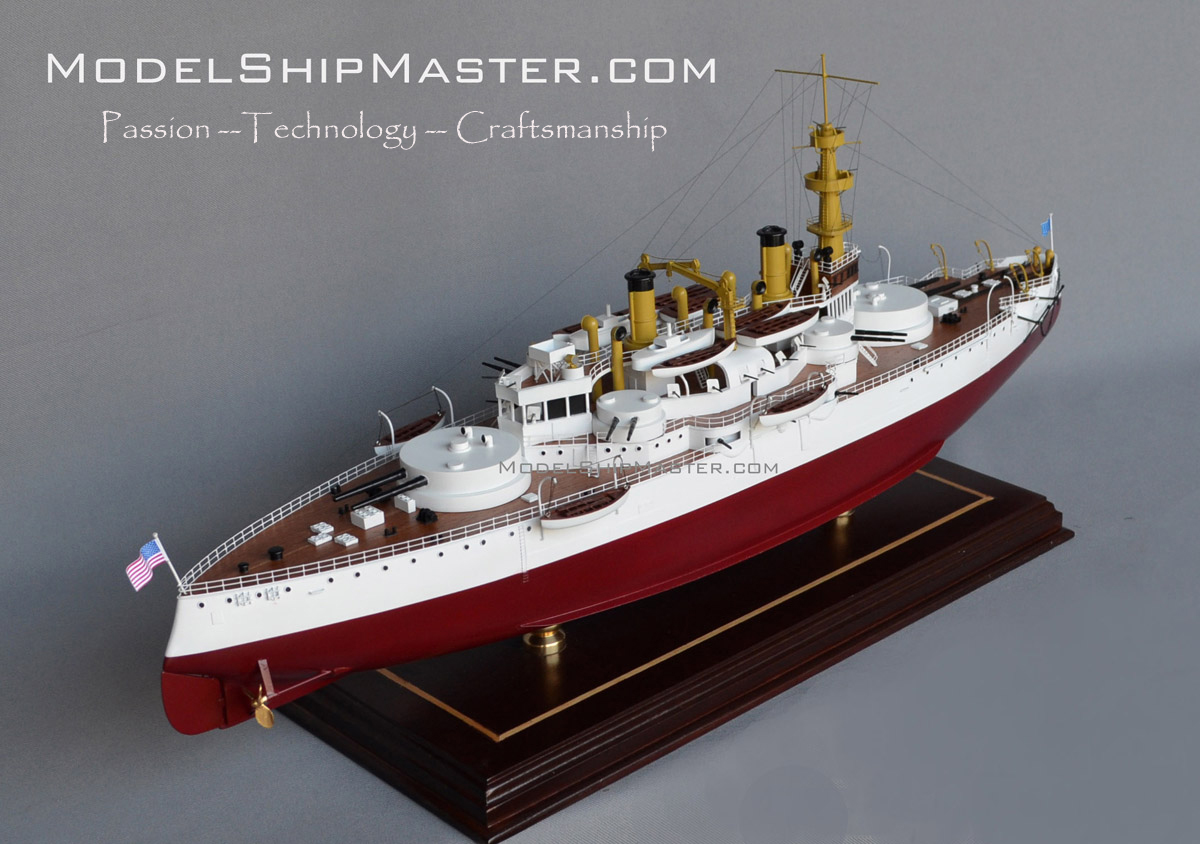
On February 15, 1898, after the armored cruiser USS
Maine blew up in Havana, USS Oregon raced from the
Pacific to the Atlantic, carruing a crew of
30 officers and 438 men. The battleship rode low in the
water, being packed with 1,600 tons of coal, 500 tons of
ammunition.
At 5 AM of April 4, the USS Oregon dropped anchor in
the harbor at Callao, Peru. The battleship had made a
continuous run covering 4,112 nautical miles in 16 days
from San Francisco and burned 900 tons of coal, with a cruise
speed of 12 knots.
.jpg)
As the USS Oregon continued south, the weather began to
change for the worse. The heavily laden battleship continually dipped her bow into mountainous wave. At
times her deck disappeared completely under solid sheets
of water. Whenever the ship’s bow plunged beneath
the churning sea, her propellers lifted clear of the
water and whirled around at tremendous speed, shaking
the ship like a quivering leaf.
After travelling 42 days, the USS Oregon anchored in Rio
Harbor in the afternoon of April 30. A dispatch boat immediately
pulled alongside the ship with a
Navy Department telegram: the United States had
been officially at war with Spain since April 25.
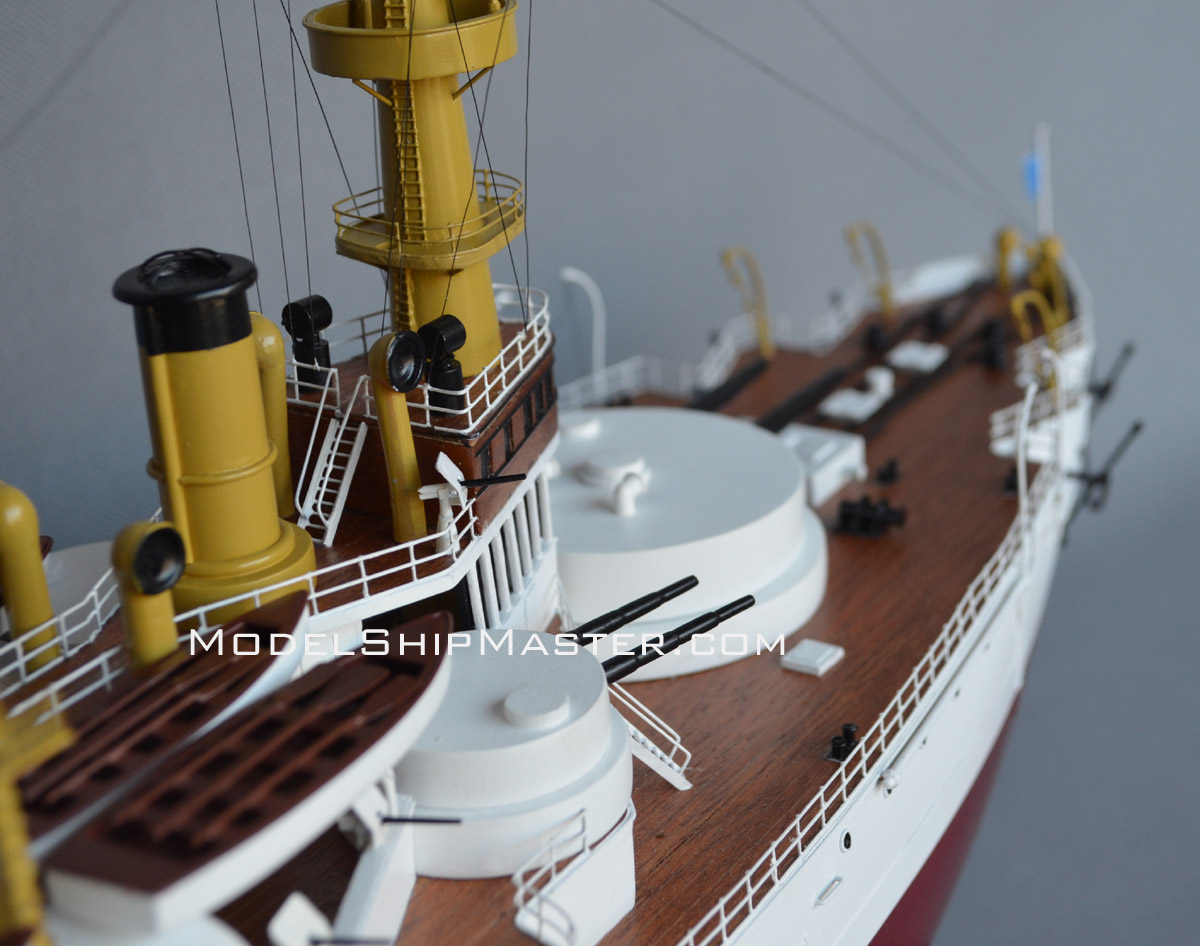
On May 4, USS Oregon and her two escorts steamed out of Rio
de Janeiro. It soon became evident that the accompanying
vessels were too slow for the battleship. Clark ordered them to
Cape Frio, and the battleship Oregon headed north alone.
On May 8,
USS Oregon steamed into Bahia, Brazil. Captain Clark
requested permission to anchor in the harbor. He used
the excuse of “engine trouble.” In reality, the purpose of the stopover
was to apply a fresh coat of warpaint and replenish the
ship’s coal and water supply.
After 68
grueling days, the odyssey of the Oregon
finally ended on May 26. The battleship arrived in the Cuba theater of operations
and took part in the destruction of the Spanish
Fleet at Santiago. USS
Oregon took
actions against eight Spanish vessels in
that engagement. She was called "McKinley's
bulldog" at the battle because she appeared as a tough dog, speeding into a
fight, and the white wake off her bow was said to
appear as a "bone" clenched in her teeth.
USS Oregon was the ship
that started the creation of the world's most powerful
navy.
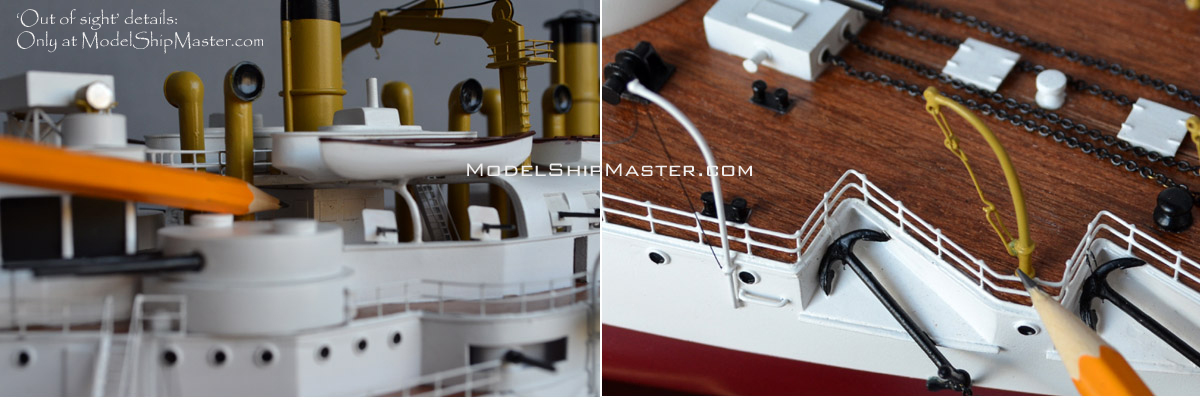
The cruise of
the USS Oregon was described as “unprecedented in battleship
history.” Every American was stirred by the
excitement of the adventure, and a few expressed their
emotions in verse. John James Meehan, in his poem “The
Race of the Oregon,” wrote: “When your boys shall ask
what the guns are for, Then tell them the tale of the
Spanish War, And the breathless millions that looked
upon The matchless race of the Oregon."
The
USS Oregon’s famous voyage
had significance far beyond the part she played in the
Spanish-American War. The trip itself advertised to the
public as well as to the military the strategic necessity for building a
canal across the Central American isthmus. A canal would
have allowed the battleship USS Oregon to steam 4,000 miles rather than
12,000. Accordingly, the United States entered into a
treaty in 1901 to build a canal, one wide enough to
accommodate battleships.
|
Click on thumbnails for more beautiful photos |
 |
 |
 |
 |
This primarily wood USS
Oregon battleship model features:
- Beautiful teak deck, not the cheap yellowish Gemilina
- Correct hull shape,
from official plans
- Fine, to scale details
(railings, ladders, hatches...)
- Correct barrel size,
correct height for the vents
- Correct boats, correct
rigging, correct buff color
- Colors as at the time when she left San
Francisco heading for the heroic battle
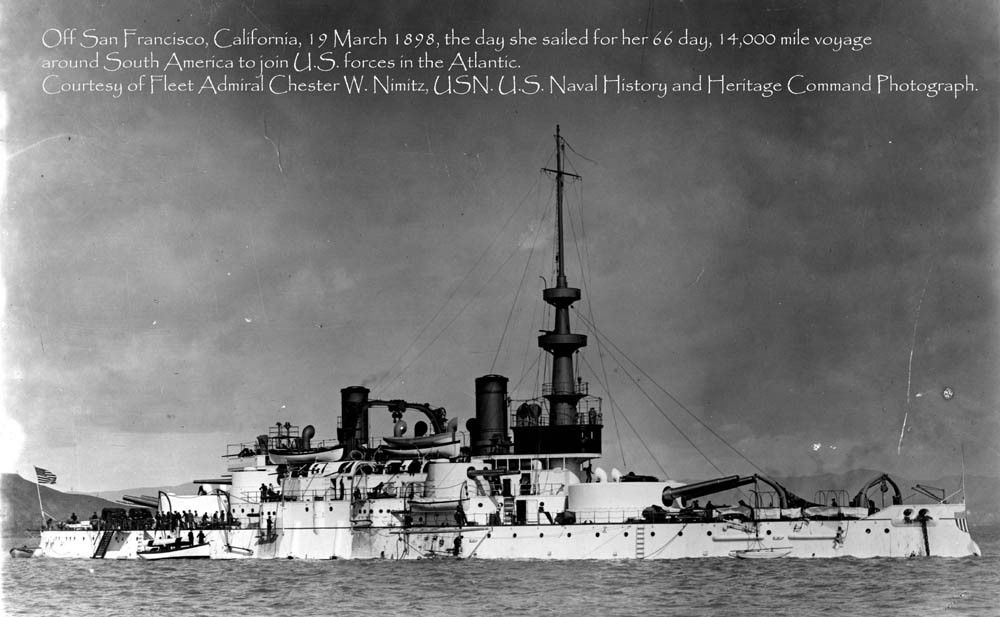
30" long x 13.5" tall
x 8" wide
(1/144 scale)
$3,500
 Shipping and insurance in
the contiguous USA included.
Other places: $400 flat rate. This
model is in stock and will be shipped within three
business days.
Shipping and insurance in
the contiguous USA included.
Other places: $400 flat rate. This
model is in stock and will be shipped within three
business days.
A copy of our USS Oregon model
has been purchased by the Navy Operational Support Center in
Portland, OR to be displayed near the real USS Oregon's anchor.
"The
Oregon looks great
and was shipped 100% intact we love it THANK YOU!!!!
Kurtis Patterson,
Navy Operational Support Center,
Portland, OR"
We also build 20" long
(1/200 scale) and
40" long
(1/100 scale) models.
Email us for quotes.
And click
here for our guarantee.
Be aware of a 34 inch advertised as "Museum Quality" models of the
USS Oregon which are
proliferating on the Internet. The superstructure is
so high that a real ship like that would capsize from a
breeze. Paint is shiny like a superyacht's paint; hull's
color is bright red; gun barrels are white! The boats have ridiculous shapes. Railings and
many other features are grossly oversized. Rigging is so
wrong. There are more but it is not our job to
list them all here. The whole thing is a shame to the
mighty USS Oregon.
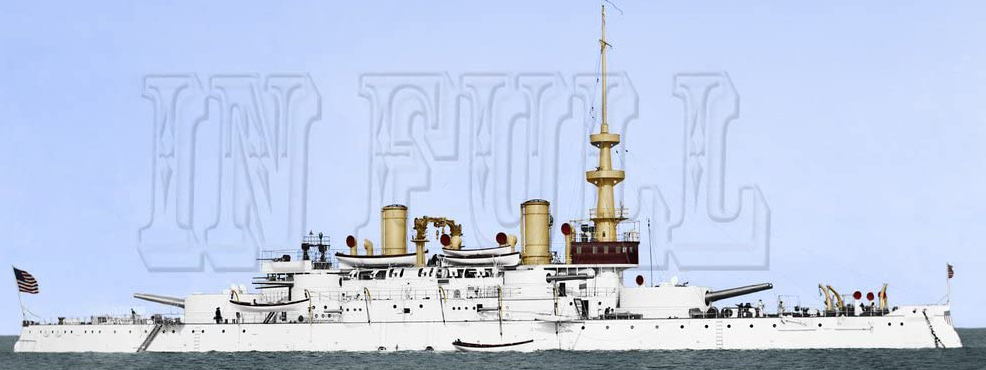
Learn more about the USS
Oregon here:
https://en.wikipedia.org/wiki/USS_Oregon_(BB-3)
|